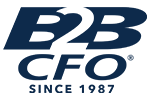
Exit Strategy – What options are there to exiting my business?
Posted on February 3, 2011 by Shane Campbell
Last month I discussed the concept of having an exit strategy, or what we refer here at B2B CFO™ as Finding the Exit™. The point was that no matter how you look at it, each of us will eventually exit our businesses. The exit can be the result of a sale, bankruptcy, a gift to heirs, poor health, or a speeding bus – you get the picture.
Since a typical business owner’s net worth is usually tied up mostly in his/her closely-held business, it stands to reason that the exit event should be carefully considered and preferably crafted by experienced professionals so the business owner can achieve their exit goals. So what are the options?
There are several options for exiting your business. But which one is best? It depends on what your goals are. The options include:
-
Sale to a third-party (most common)
-
Private equity (“PE”) recapitalization
-
Employee Stock Ownership Plan (“ESOP”)
-
Management buyout (“MBO”)
-
Gifting (to heirs, charity, etc)
The first two choices are categorized in John M. Leonetti’s Exiting Your Business, Protecting Your Wealth, as external transfers. External transfers generally provide for higher selling prices, but have disadvantages as well.
- Sales to a third-party usually yield the highest selling price of all options. But they don’t necessarily yield the most in net proceeds, considering the potentially high taxes (sometimes double taxation – see below) and transaction costs (commissions to broker, attorneys, accountants, etc.) So it is not always so important how high your sales price is, but how much of the proceeds that you keep that is important. That said, Larry Reinharz and the folks at Woodbridge Group LLC (www.woodbridgegrp.com) have achieved some extraordinary value for exiting companies who have elected to sell, even in this recessionary environment.
- Private equity recapitalizations will normally yield a lower initial price. The PE firm buys 80% of your company, and then buys the remaining 20% a couple of years later. The goal is for the PE firm to pay out the same amount for the remaining 20% as was paid for the original 80%. This is referred to as the “second bite at the apple.” That fortuitous event can happen as the result of an upgraded company valuation that reflects the growth the PE firm has brought from additional capital, expertise, and opened doors.
The last three choices are categorized in John M. Leonetti’s Exiting Your Business, Protecting Your Wealth, as internal transfers. They include:
- ESOPs will allow a business owner to sell all or part of the business, depending on the business owner’s goals. In investment jargon, it allows one to “take some off the table.” An ESOP will yield a lower “fair market” selling price, but with the associated tax advantages, especially in the case of C Corporations, the net yield can be very good. Additionally, the business owner can and usually will remain at the company in an executive position.
- MBO’s can be a good choice as they can provide a built-in buyer for your business without the hassle of going to market. Most MBO deals will have to be leveraged as the managers rarely have sufficient wealth and liquidity to write a check.
- Gifting is obviously the lowest yield of all exit options. However, some business owners are more concerned with passing the business along to heirs under succession planning, wherein the goal is to eliminate or at least minimize estate taxes. Many strategies can be employed, legally, which can transition minority interests in a closely-held business at significant discounts, making the succession a much more tax-friendly strategy.
The above choices are all advantaged in some situations and disadvantaged in others. It just depends. For instance, the sale of a very successful C Corporation could yield the highest sales price of all the options, but offer a very poor net return due to double taxation. That occurs when a C Corporation sells to a buyer who normally insists on an “asset sale” categorization in order to avoid any potential undisclosed corporate liabilities. The gain on the sale is first taxed at the corporate level (say 35%), then potentially taxed again (say a combined 25% capital gains rate). So when the dust clears, the transaction might be taxed at an effective 60% rate – yikes! That’s an extreme case, but not out of the realm if the business sale is not properly planned.
Your business is probably your most valued asset. Don’t leave your exit to poor planning or chance.

